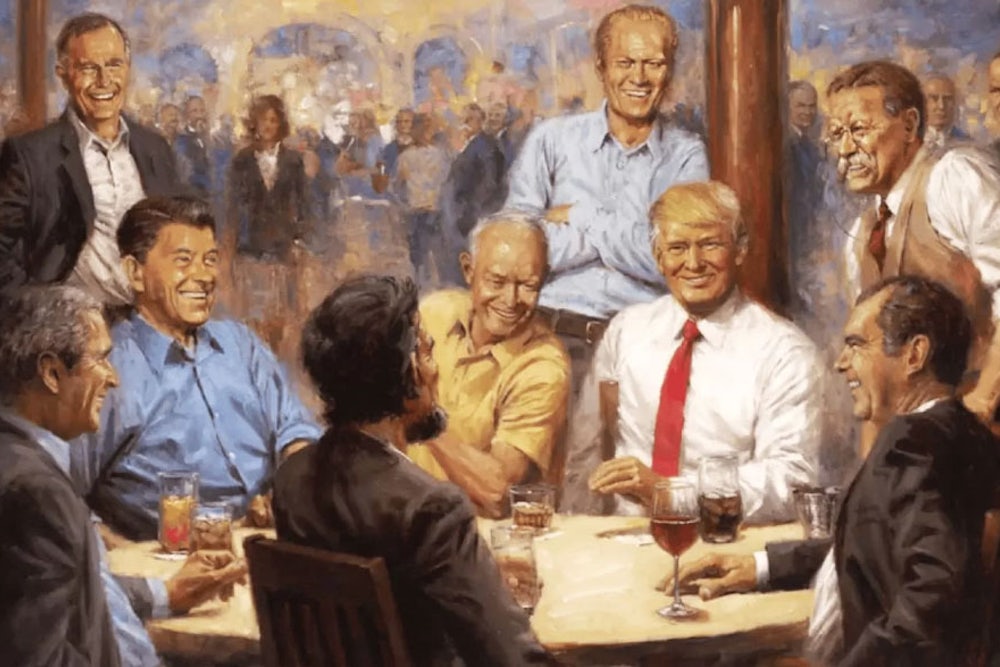The 60 Minutes interview with President Donald Trump revealed an unusual piece of decor news: a painting by Andy Thomas called “The Republican Club” which shows a slimmed down Trump playing poker at a table with some of his illustrious (and sometimes infamous) GOP predecessors including Abraham Lincoln, Teddy Roosevelt, Richard Nixon, and Ronald Reagan.
The Daily Beast describes it as a “kitschy fantasy painting” and “an update to a best-selling image commonly found in tourist gift shops and online galleries.” While the painting is Trumpian in its gaudiness, it does reflect a wider tendency in political art to prize populist camp over modernist astringency. University of Wisconsin historian Patrick Iber describes the painting as “representational kitsch,” a style he says is now associated with Republicans but was once popular with political leaders of both parties. In fact, when the American government wanted to fund abstract art in the 1940s and 1950s as part of the Cold War, they had to do so secretly because of bipartisan political love of representational art.
Your periodic reminder that there are aesthetic dimensions to political competition, and that representational kitsch is the Republican brand in the visual arts https://t.co/4myTMZGv0L
— Patrick Iber (@PatrickIber) October 15, 2018
This was one of the reasons the CIA took over as the de facto culture ministry of the USA during the Cold War: when the State Department tried to promote aesthetically diverse works in the Advancing American Art exhibition, Republicans in Congress lost it https://t.co/f6w18plLah
— Patrick Iber (@PatrickIber) October 15, 2018
In 1947, President Harry Truman reacted to a magazine article about expressionism by saying, “If that’s art, I’m a Hottentot.” In his 2001 book Before the Storm, historian Rick Perlstein suggests that one reason New York governor Nelson Rockefeller seemed out of place in mid-20th century Republican politics was his “passion” for modern art. In 1960, Rockefeller gave Richard Nixon a tour of his penthouse. According to Perlstein, “The centerpiece of the living room was twin fireplaces, the andirons custom-designed by the sculptor Alberto Giacometti, their mantels stretching nearly to the ceiling and painted with specially commissioned murals by Fernand Leger and Henri Matisse depicting languid female figures and sinuous plantlike morphs.” It’s perhaps not an accident that the Giacometti-loving Rockefeller never became president.
